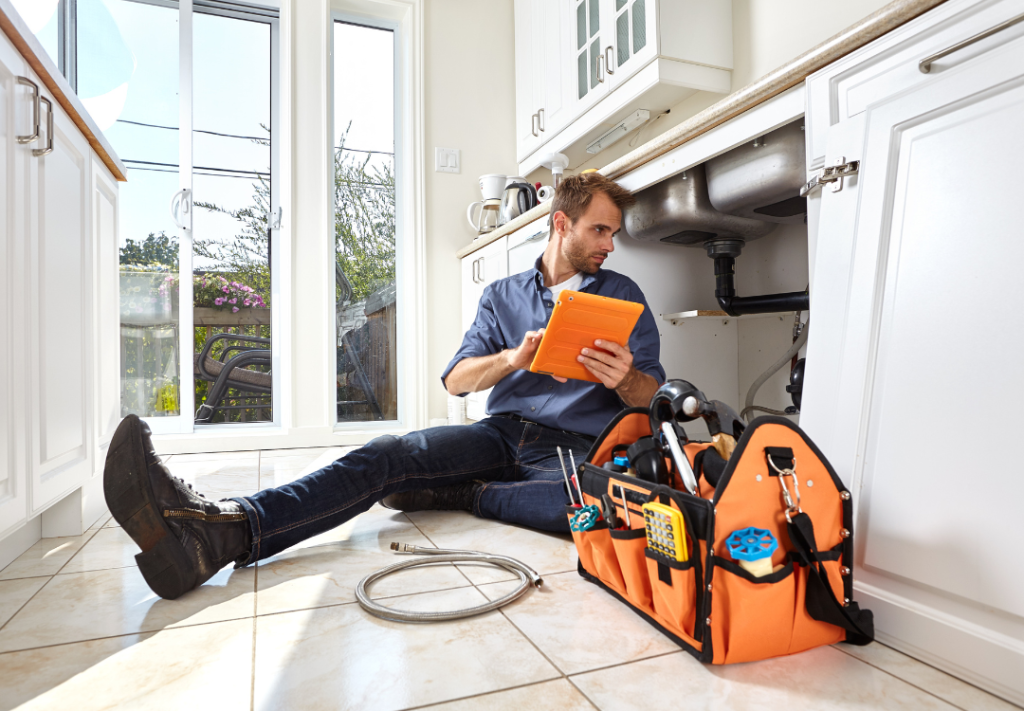Water leaks can cause serious damage to your home if left undetected. From increasing your water bill to causing structural issues and mold growth, leaks can lead to expensive repairs if not addressed in time. The good news is that with a proactive approach, you can detect and prevent water leaks before they become a major problem.
In this guide, we’ll cover how to identify common signs of water leaks, where leaks are most likely to occur, and effective strategies to prevent them.
1. Signs of a Water Leak
Not all leaks are obvious. Some may be hidden within walls or underground, making them difficult to detect. However, there are common warning signs you should watch out for:
a) Higher Water Bills
If your water bill suddenly increases without any change in usage, you may have an undetected leak. Even a small leak can waste thousands of gallons of water per year.
b) Water Stains on Walls and Ceilings
Yellow or brown stains on ceilings and walls often indicate a leak in your plumbing or roof. If left untreated, these leaks can cause drywall damage and mold growth.
c) Musty Odors and Mold Growth
A persistent musty smell, especially in damp areas like bathrooms, basements, or under sinks, can indicate a hidden leak. Mold thrives in moist environments, and a leak may be the cause.
d) Low Water Pressure
If your faucets or showerheads suddenly have weak water flow, it could be due to a leak in the pipes, reducing the amount of water reaching your fixtures.
e) Sounds of Running Water
If you hear running water when all taps and appliances are off, there may be a leak somewhere in your plumbing system.
f) Soft or Warped Flooring
Leaks under floors can cause wood to warp or tiles to loosen. If you notice soft spots, it could be due to water damage.
2. Common Areas Where Leaks Occur
Knowing where leaks commonly occur can help you find and fix them before they cause major damage.
a) Faucets and Fixtures
Dripping faucets are among the most common household leaks. A worn-out washer or loose valve is often the culprit.
b) Under Sinks
Pipes beneath sinks can develop slow leaks due to worn-out seals or loose connections.
c) Toilets
A running toilet can waste up to 200 gallons of water per day. Leaks often occur due to a faulty flapper or seal.
d) Water Heaters
Leaks around the base of your water heater may indicate a failing tank or loose connections.
e) Roof Leaks
Damaged shingles, clogged gutters, and cracked flashing can lead to leaks in your ceiling and walls.
f) Underground Pipes
Leaks in underground pipes can be hard to detect but may cause wet spots in your yard or an increase in your water bill.
3. How to Detect a Water Leak
If you suspect a leak but can’t find the source, try these methods:
a) Check Your Water Meter
Turn off all water sources in your home.
Locate your water meter and take a reading.
Wait 30 minutes without using any water.
Check the meter again. If the reading has changed, you likely have a leak.
b) Dye Test for Toilet Leaks
To check for a leaking toilet:
Add a few drops of food coloring into the toilet tank.
Wait 10-15 minutes without flushing.
If the color appears in the bowl, your toilet has a leak.
c) Use a Leak Detection Device
Smart leak detectors can be installed near appliances, sinks, and water heaters to alert you when they detect excess moisture.
4. How to Prevent Water Leaks
Preventing leaks is easier and cheaper than fixing them. Here are some proactive steps:
a) Regular Inspections
Check pipes, faucets, and appliances regularly for any signs of leaks.
Inspect the roof for missing or damaged shingles.
Look for water stains on ceilings and walls.
b) Maintain Your Plumbing System
Replace old pipes before they corrode and develop leaks.
Avoid using chemical drain cleaners, which can damage pipes over time.
Insulate pipes during winter to prevent freezing and bursting.
c) Monitor Your Water Pressure
High water pressure can strain pipes, causing leaks over time.
Install a water pressure regulator to maintain a safe level (between 40-60 psi).
d) Keep Gutters and Downspouts Clean
Clogged gutters can cause water to overflow and leak into your home’s foundation.
Clean your gutters at least twice a year to prevent blockages.
e) Replace Old Washers and Seals
Faucets and showerheads have rubber washers that wear out over time.
Replacing them periodically can prevent drips and leaks.
f) Install Leak Detection Systems
Smart leak sensors can send alerts to your phone when moisture is detected.
Some advanced systems can even shut off the water supply automatically.
5. What to Do If You Find a Leak
If you discover a leak, follow these steps:
a) Shut Off the Water
Find the main water shut-off valve and turn it off to prevent further damage.
b) Contain the Leak
Use towels or buckets to collect water and minimize damage.
c) Repair or Call a Professional
Small leaks: Tighten connections or replace washers.
Major leaks: Contact a professional plumber immediately.
6. The Importance of Professional Leak Detection
While minor leaks can be fixed with DIY solutions, some leaks require professional attention. Barnes Roof & Plumbing Services offers expert leak detection and repair to protect your home from costly damage. Our team uses advanced technology to locate hidden leaks and provide fast, effective solutions.
Conclusion
Water leaks can cause extensive damage if not detected early. By staying vigilant and following preventative measures, you can protect your home from costly repairs. If you suspect a leak or need professional assistance, Barnes Roof & Plumbing Services is here to help. Contact us today for expert leak detection and plumbing repairs!

